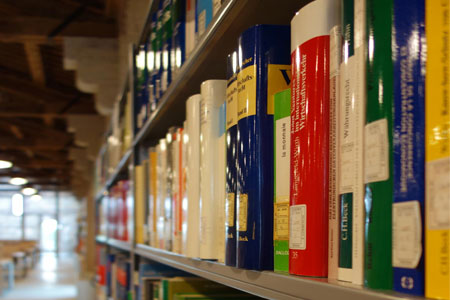Corso disattivato

Orario lezioni
Obiettivi formativi
The course provides an overview of the main econometric tools, with particular emphasis on economic applications, developed interactively in class using the professional software Stata™.
After a short introduction on the purpose of Econometrics and the basic commands in Stata, the program is divided in five parts. The first part (OLS) introduces to the standard econometric method, i.e., ordinary least squares (OLS) regression. The second part (OLS diagnostics) describes the main statistical tests on OLS estimates, as well as diagnostic tests on heteroscedasticity and wrong specification of the functional form. The third part (time series) presents tests on autocorrelation, and lists the models commonly used in the context of time series data. The fourth part (IV) discusses the problem of endogeneity and the instrumental variable estimators. The fifth part (extensions) introduces microeconometric models suited for binary dependent variables (probit, logit), and for panel data (random effects, fixed effects).
Programma
1) Introduction
1.1) What is Econometrics?
Definition; cross-section, time series and panel data.
1.2) Stata tutorial
Data management; basic statistics; graphics.
2) Ordinary Least Squares (OLS) Estimator
2.1) Introduction
Univariate and multivariate regression; marginal effects and elasticity.
Example: House prices
2.2) Goodness of fit
R2, adjusted R2, AIC and BIC criteria; forecast; outliers.
Example: Forecasting stock returns
2.3) Properties
Gauss-Markov assumptions; unbiasedness; efficiency; consistency; asymptotic normality.
3) OLS Diagnostics
3.1) Testing
t-test on one restriction; F test on several restrictions.
Example: Capital asset pricing model
3.2) Specification
Collinearity; superfluous and omitted variables; RESET test of specification; Chow test of structural stability.
3.3) Heteroscedasticity
White test and Breusch-Pagan test; White robust standard errors.
Example: Risk profile
4) Time Series
4.1) Autocorrelation
Durbin-Watson test and Breusch-Godfrey test; Newey-West robust standard errors.
Example: Ice cream consumption
4.2) Modeling
Auto-Regressive (AR), Moving-Average (MA) and ARMA processes.
Example: GDP and consumption
5) Instrumental Variable (IV) Estimator
5.1) Motivation
Autocorrelation and lagged dependent variable; measurement error; omitted variables; simultaneity.
5.2) Estimator
Assumptions; Simple instrumental variable (SIV) and generalized instrumental variable (GIV); properties; two-stage derivation (2SLS).
Example: Women wage function
5.3) Instrument selection
Relevance test; weak instruments; Sargan validity test; Hausman exogeneity test.
Example: Returns to schooling
6) Extensions (Microeconometrics)
6.1) Binary dependent variable
Linear probability model (LPM); probit and logit models; marginal effects; maximum likelihood estimate; goodness of fit; hypothesis testing.
Example: Bus tickets
6.2) Panel data
Pooled effects, fixed effects and random effects; goodness of fit; comparison tests.
Example: Waste sorting
Suggested material:
- Course slides, available on eLearning.
- Verbeek, M., A Guide to Modern Econometrics, Wiley, 2000 or following editions.
Testi di riferimento
| Autore |
Titolo |
Casa editrice |
Anno |
ISBN |
Note |
| Marno Verbeek |
A Guide to Modern Econometrics
(Edizione 4)
|
John Wiley and Sons |
2012
|
978-1-119-95167-4 |
|
Modalità d'esame
The exam is written. The final grade is based on one mandatory final exam and one voluntary homework (assigned in the middle of the semester). The final exam includes theoretical, numerical and applied exercises on all the topics covered in class; the homework includes theoretical and applied exercises on the topics covered in the first half of the class meetings. Applied exercises require the use of Stata.
During the final exam it will be allowed the use of handheld calculators, but not the use of textbooks or teaching notes.
The homework adds 1 bonus point to the final grade and accounts for 10% of the final grade.







